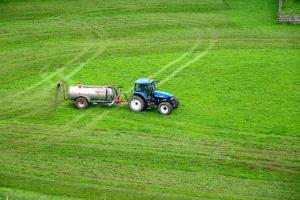The massive use of fertilizers and the production and use of manure in agriculture over the past 100 years have led to significant reactive nitrogen emissions to air and releases to water and land. Burning of fossil fuels (in vehicles, power plants and industry) is another source of reactive nitrogen emissions. Air, soil and water pollution are among the dire consequences of these nitrogen emissions, with knock-on damages to human health, and biodiversity of forests and rivers. In soils and water bodies, too much nitrogen can lead to nutrient overloads or eutrophication. Earth system scientists say that the world’s planetary boundaries for interference with the nitrogen cycle have already been surpassed, meaning that there is a high risk of non-linear changes to ecosystems and biodiversity, which are likely eroding the resilience of important sub-systems of the Earth System.
Latest assessments of nitrogen depositions from atmosphere into European ecosystems, which were presented at a meeting of the International Cooperative Programme on Modelling and Mapping of Critical Levels and Loads and Air Pollution Effects, Risks and Trends under the UNECE Convention on Long-range Transboundary Air Pollution (Air Convention) (Prague and online, 28-30 March 2023), show that in large parts of the region, thresholds (critical loads) for eutrophication are exceeded. The bad news, as confirmed by a recent report published by the Coordination Center for Effects, is that the recovery of ecosystems from eutrophication is relatively slow and the share of ecosystems in Europe, where this threshold is exceeded, remains above 60% for 2020. The highest exceedances are found in the Po Valley in Italy, the Dutch-German and German-Danish border areas and in north-eastern Spain.
Emissions of ammonia (NH3) and nitrogen oxides (NOx) are regulated under the Air Convention’s Protocol to Abate Acidification, Eutrophication and Ground-level Ozone (Gothenburg Protocol). New impetus for ambitious action to further reduce nitrogen emissions might come from the new Kunming-Montreal Global Biodiversity Framework under the Convention on Biological Diversity (CBD). At the meeting in Prague, representatives of the CBD presented the new Global Framework and specifically target 7, which aims to “reduce pollution risks and the negative impact of pollution from all sources, by 2030, to levels that are not harmful to biodiversity and ecosystem functions and services, considering cumulative effects, including: reducing excess nutrients lost to the environment by at least half including through more efficient nutrient cycling and use”.
Given the tools and latest guidance on critical loads of nitrogen developed under the ICP, experts at the ICP meeting discussed how this could be used in further developing the indicators for the Global Biodiversity Framework. Experts agreed to strengthen cooperation with the CBD in this regard, also involving other ICPs.
The objectives of the ICP Modelling and Mapping, consisting of the Programme Task Force and two programme centres – the Coordination Center for Effects and the Centre for Dynamic Modelling – are to provide information on: critical levels and loads and the risk of exceedances for selected pollutants and effects on appropriate endpoints of the natural environment; and on the modelling and mapping of the present status and trends of impacts of air pollution on terrestrial and aquatic ecosystems for the United Nations Economic Commission for Europe region.
